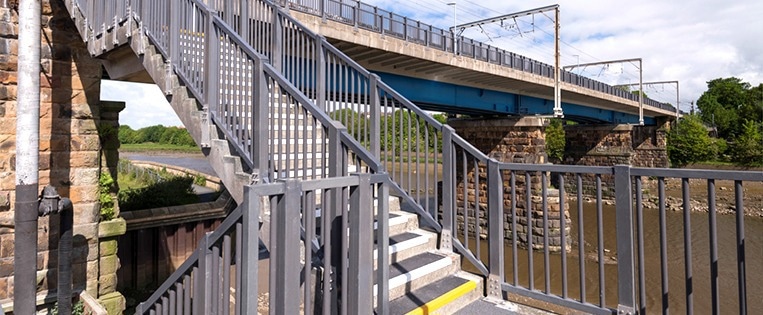Fiber reinforced polymer (FRP) is a kind of composite material that utilizes fiber materials to modify the strength and elasticity of plastic. They provide greater tensile strength and have application use in a broad range of applications. In this article, some of the key properties of fiberglass reinforced polymer are discussed.
Fiber Reinforced Polymer is Corrosion Resistant
FRP exhibits high levels of corrosion and chemical resistance. Unlike metal, it does not rust, nor does it rot like wood. This means that these composite materials are extremely durable with prolonged service life and reduced maintenance requirements.
Due to the fact that FRP has exceptional corrosion resistance properties, it is utilized in a range of applications, including structures in the power industry, marine infrastructure, the aerospace industry, and many more.
Strongwell’s fiber reinforced polymer takes advantage of the fact that it is manufactured in ISO 9001 facilities, with all incoming materials having to meet stringent regulations.

Image Credit: Strongwell
How is Fiberglass Reinforced Polymer Made?
FRP can be fabricated using several different techniques, the most common being pultrusion. These techniques can generate continuous lengths of FRP structural shapes with uninterrupted cross-sections.
A liquid resin mixture and flexible textile reinforcing fibers are mixed together and fed through a heated steel forming die using a continuous pulling device. The reinforcement materials (including the fiberglass mat and roving) are submerged in a liquid resin mixture and fed through the die. The heat of the die facilitates hardening and a cured profile forming.
Key Characteristics
The key characteristics of FRP are predicated on a number of factors, including the volume makeup and mechanical properties of the matrix with fibers and where the fibers are positioned in the matrix.
Materials fabricated from FRP are generally low in weight but extraordinarily strong. They have superb fatigue levels, impact, and compression properties. They also have exceptional electrical properties and greater environmental resistance and can significantly improve the thermal insulation of their applications.
FRP is extremely cost-effective. Occasionally they have a greater initial cost, but their low maintenance and lightweight properties mean significantly less equipment is needed for installation and fabrication. They can also be customized to meet a wide range of applications and performance specifications.
Fiberglass Reinforced Polymer as an Alternative to Wood
FRP is not significantly affected by water immersion or moisture, whereas wood can rot and eventually decompose over time. While pressure-treated wood can be utilized, FRP is considered to be a safer alternative as it does not leach chemicals into soil or water upon direct contact.
Fiberglass Reinforced Polymer as a Steel Alternative
Steel has been used for numerous years in building materials as it is robust and durable. However, its corrosion-resistant coating can be easily damaged, which may cause expensive corrosion issues. FRP is significantly lighter than steel, making it easier to incorporate in building applications, and it is not vulnerable to the same corrosion.
To discover more about fiberglass reinforced polymer, contact the Strongwell team today.

This information has been sourced, reviewed and adapted from materials provided by Strongwell Corporation.
For more information on this source, please visit Strongwell Corporation.